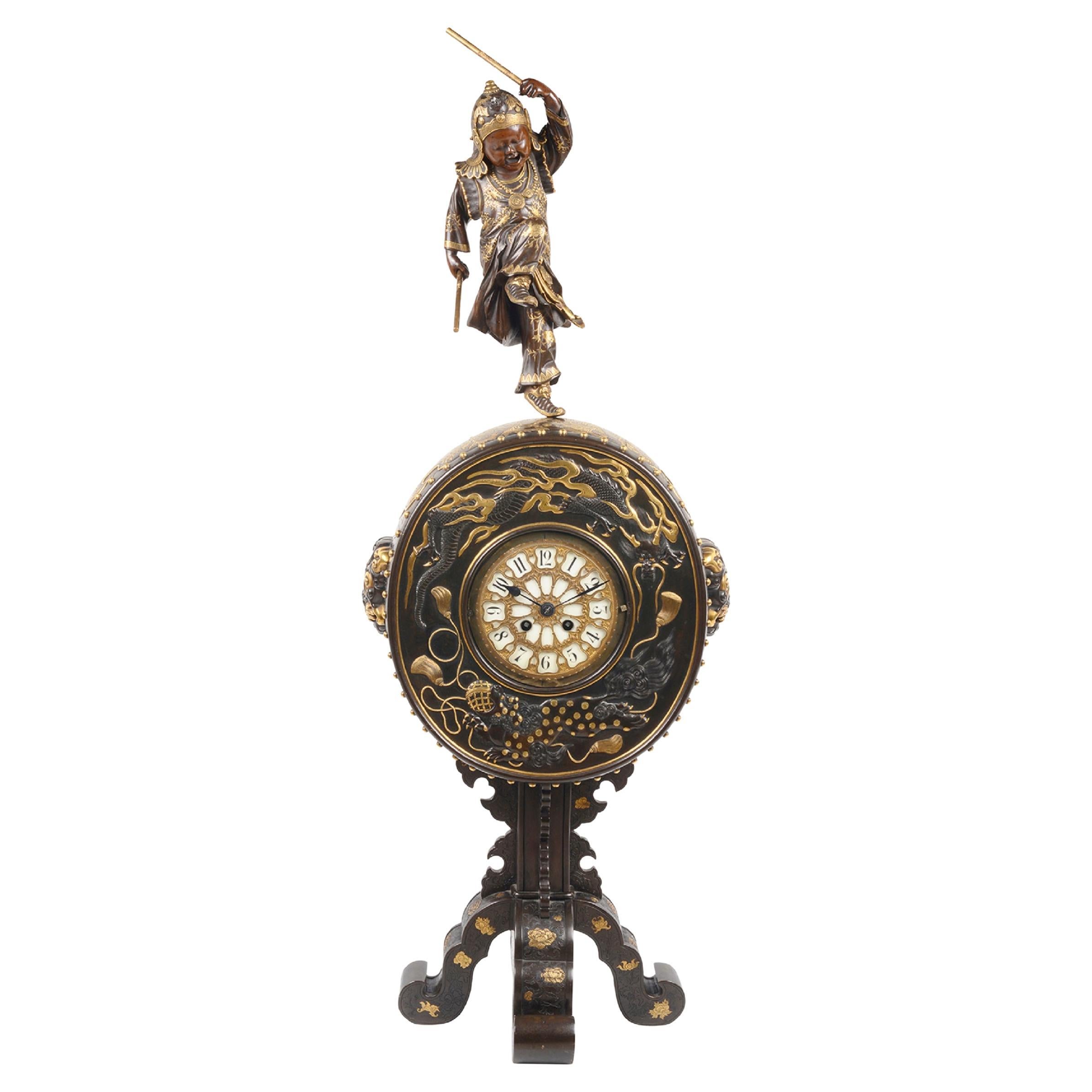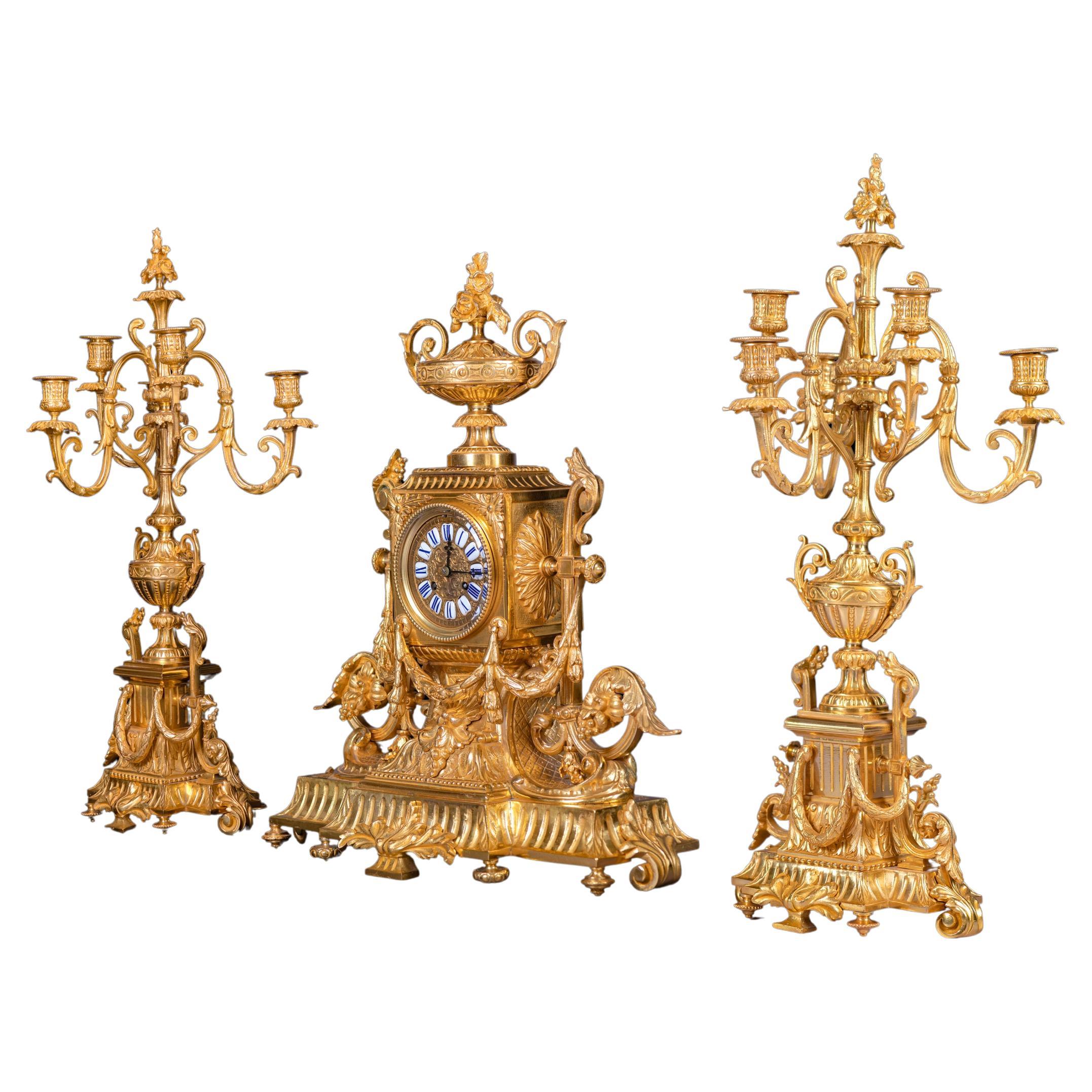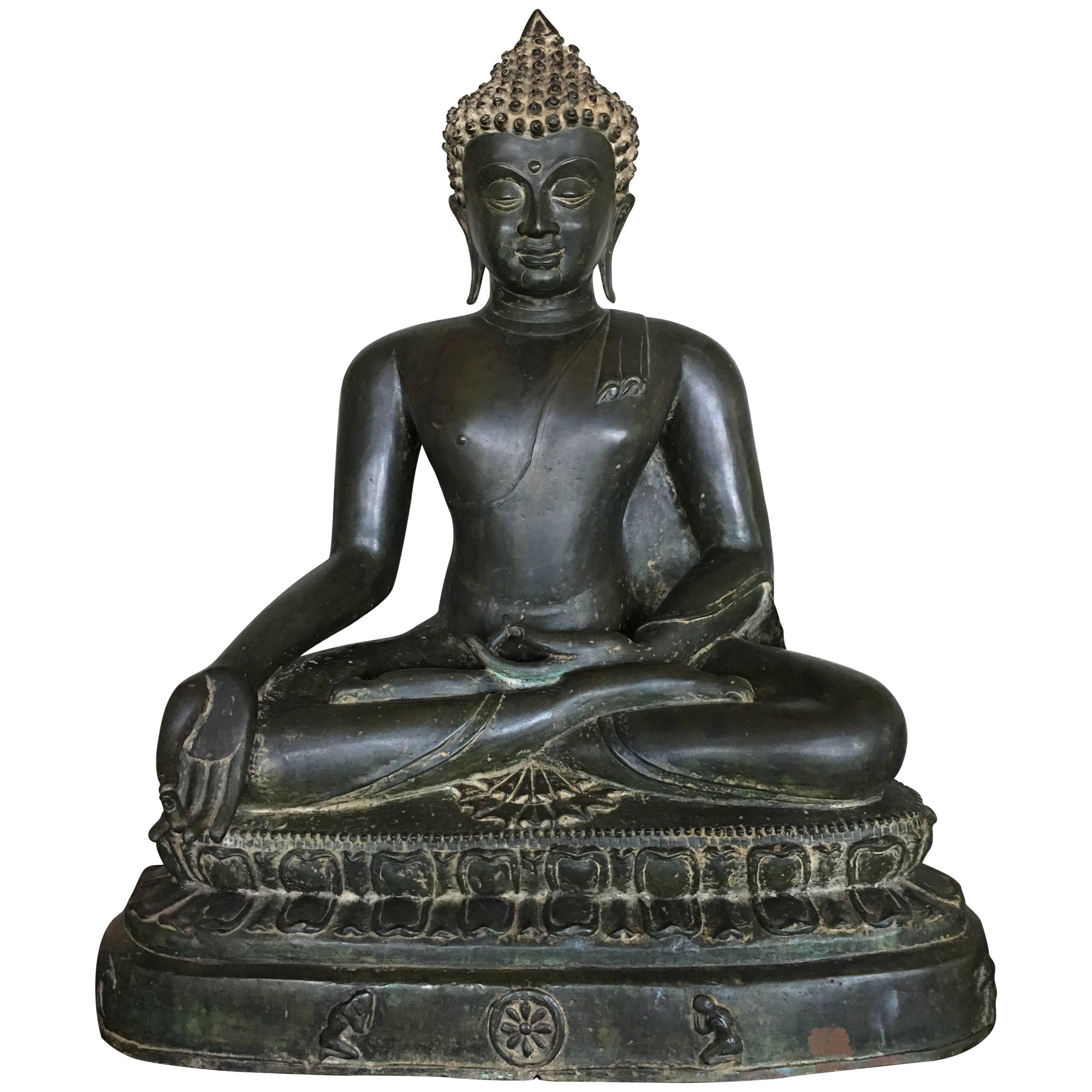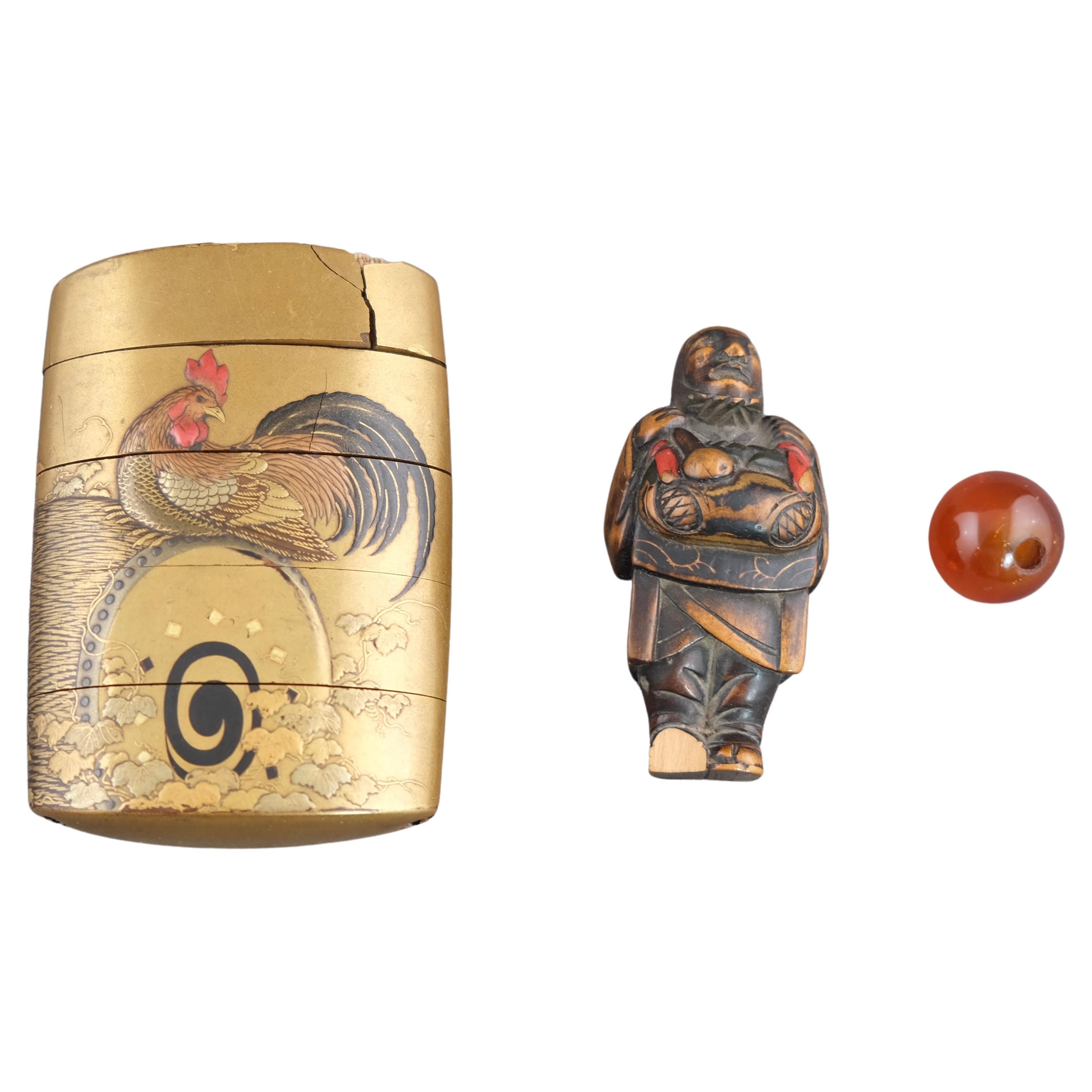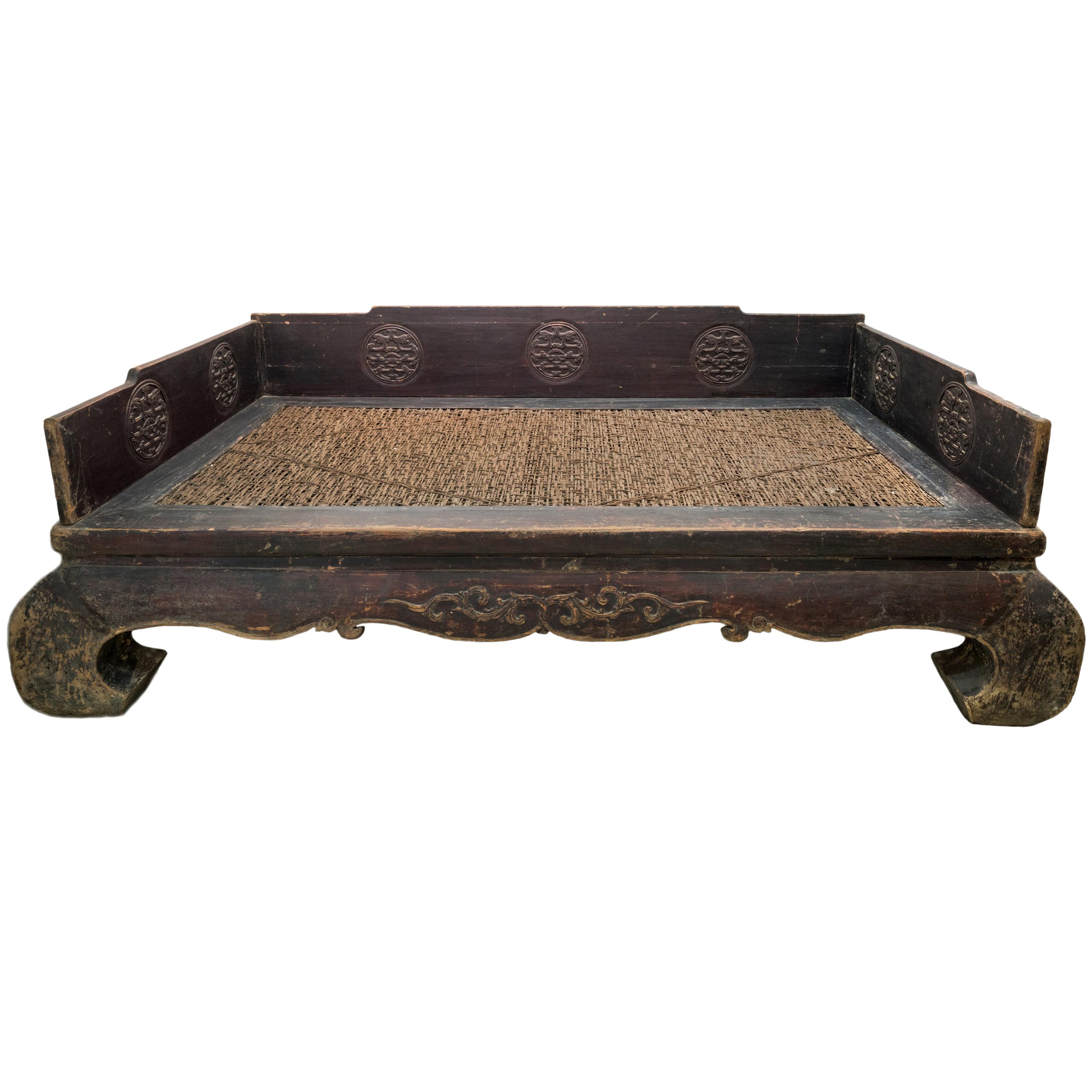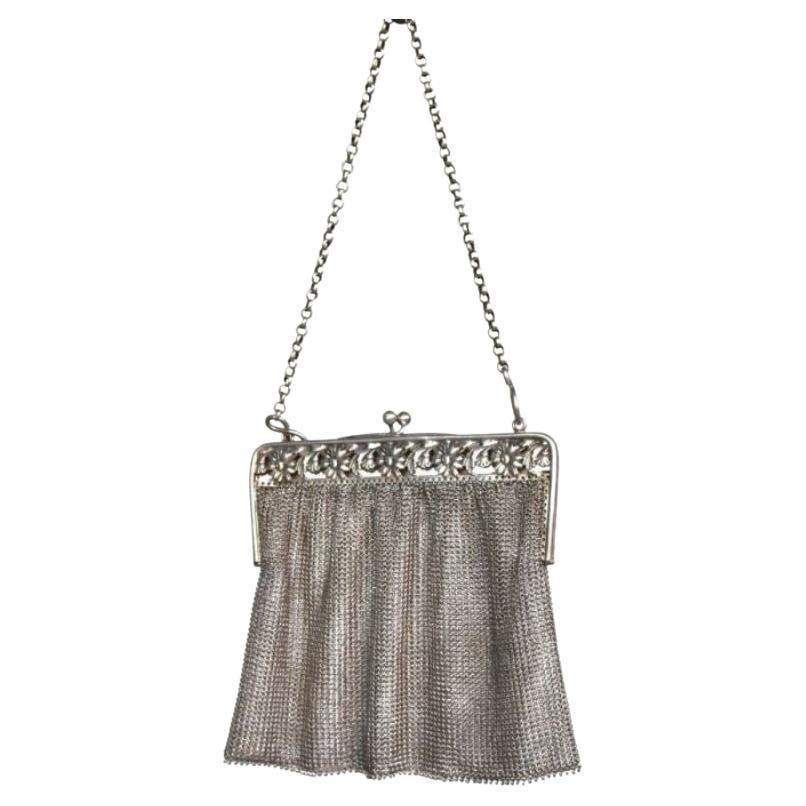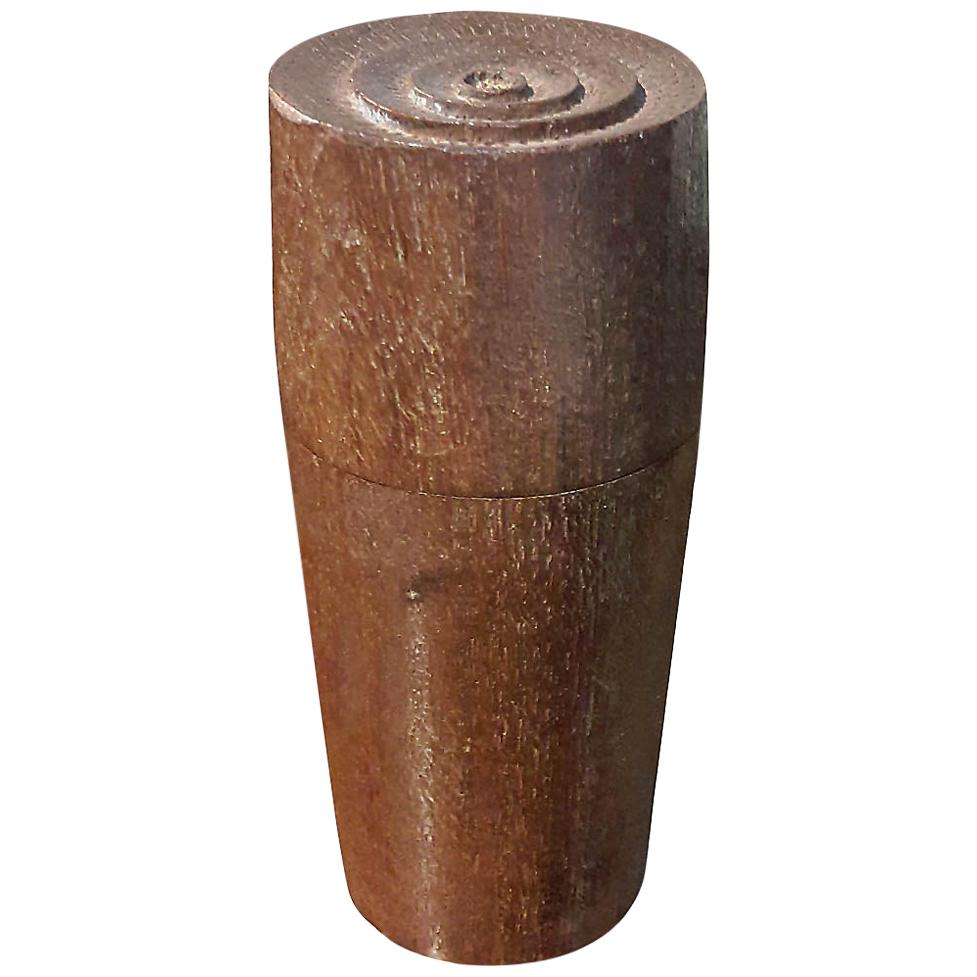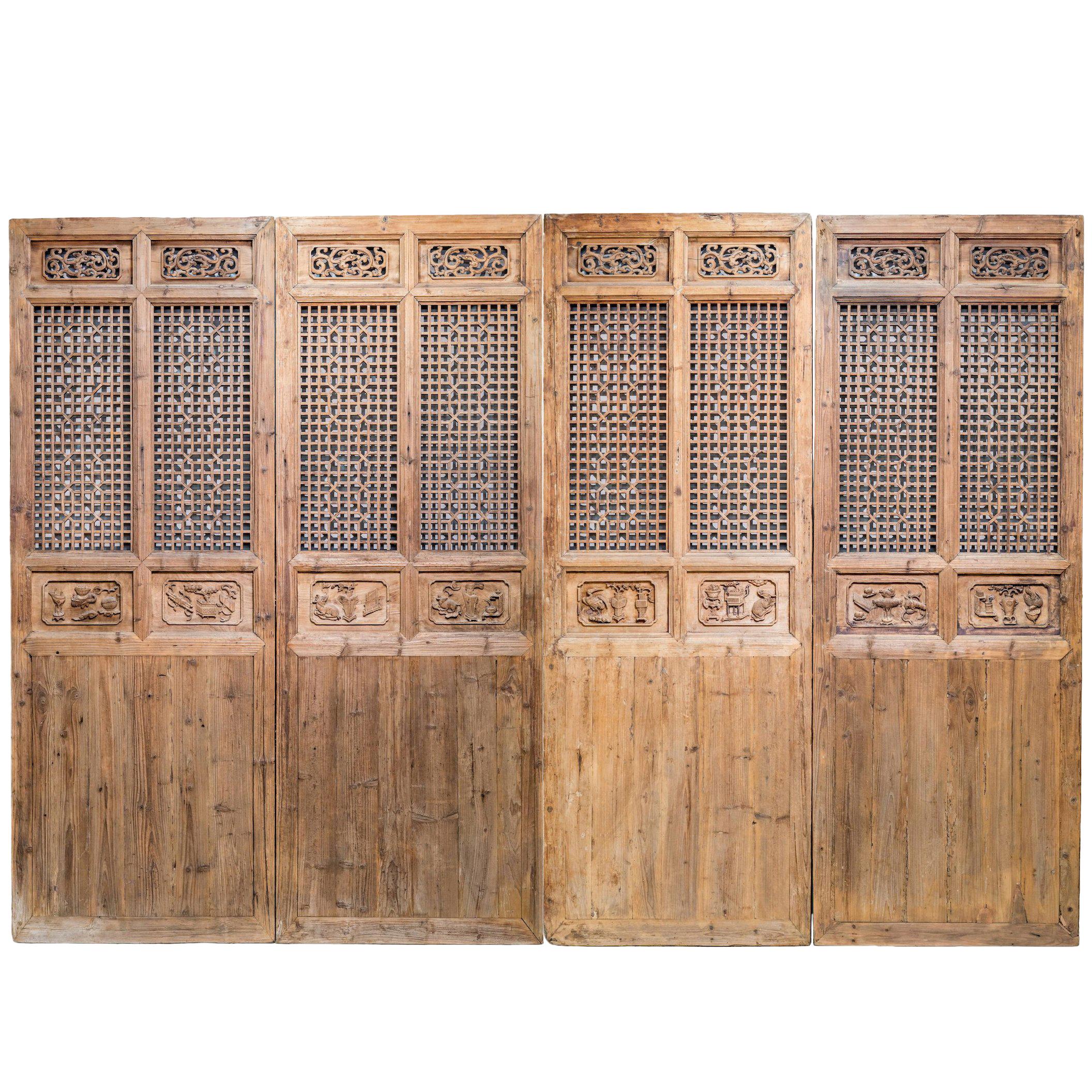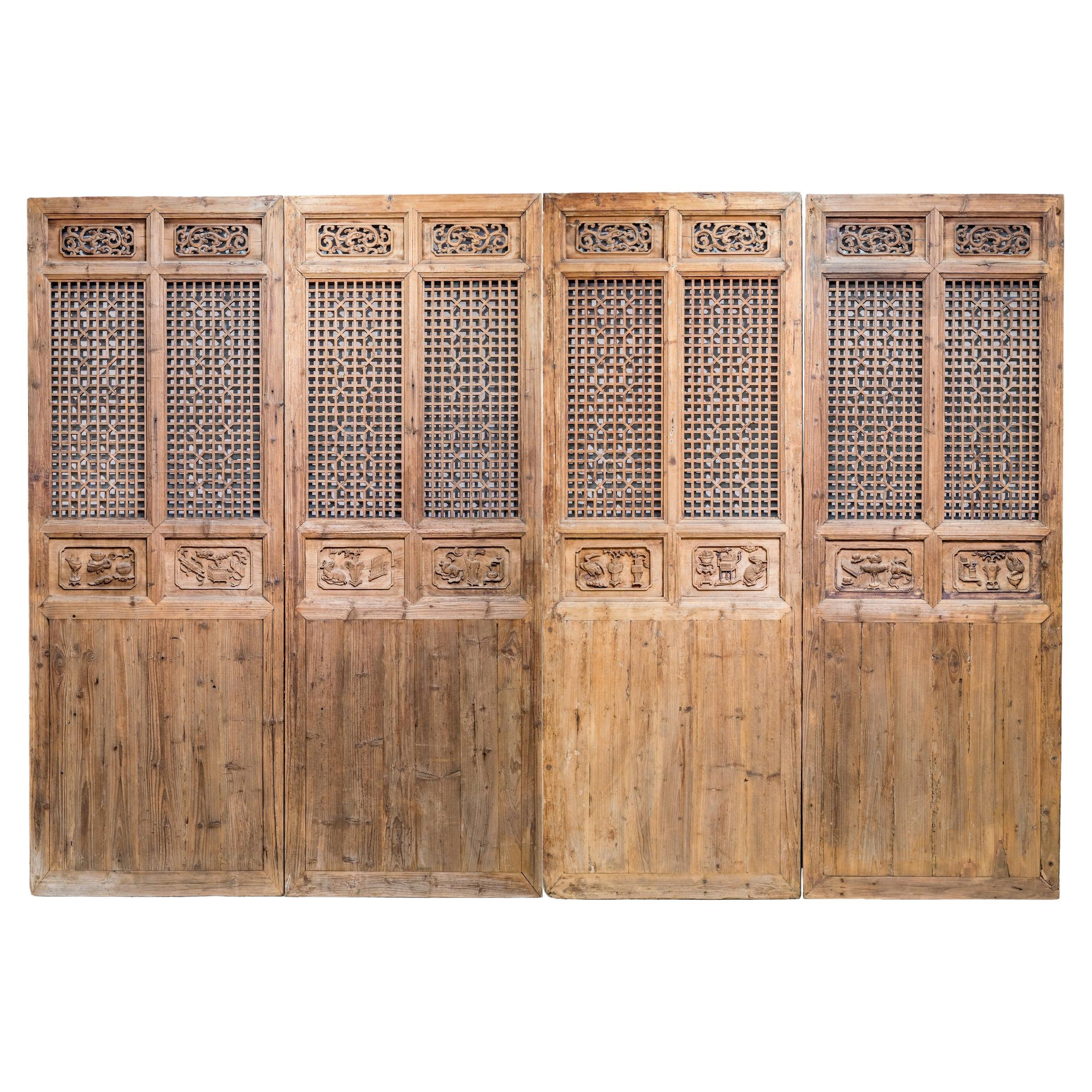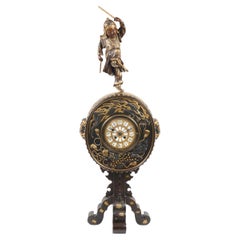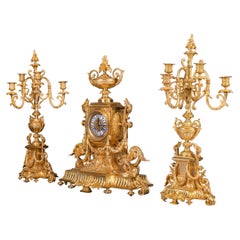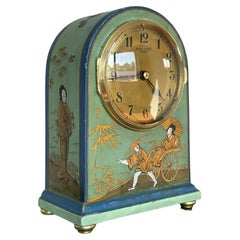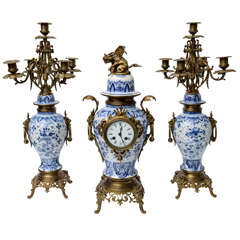
Delft Mantel Clock, Garinature, with Bronze Mounts, Late 19th Century
View Similar Items
1 of 10
Delft Mantel Clock, Garinature, with Bronze Mounts, Late 19th Century
About the Item
- Dimensions:Height: 24.5 in (62.23 cm)Width: 9 in (22.86 cm)Depth: 9 in (22.86 cm)
- Sold As:Set of 3
- Materials and Techniques:
- Place of Origin:
- Period:
- Date of Manufacture:1880
- Condition:Wear consistent with age and use.
- Seller Location:West Palm Beach, FL
- Reference Number:Seller: 23561stDibs: 1305299211224
You May Also Like
- Fine Japanese Miyao Bronze Mantel ClockBy Eisuke Miyao 1Located in Brighton, SussexA fine quality and rare, Japanese Meiji period (1868-1912) Signed Miyao bronze mantel clock. Having a charming drummer boy above a drum like surround to t...Category
Antique Late 19th Century Japanese Mantel Clocks
MaterialsBronze
- Large 19th Century French Ormolu Clock Garniture in the Louis XVI StyleLocated in Dublin, IEMeasures: H: 25 1/2 in / 64.7 cm ; W: 22 1/4 in / 56.5 cm ; D: 9 1/2 in / 24.2 cm An exceptional quality three-piece clock set designed in a grand neoclassical. The set is compri...Category
Antique 19th Century French Louis XVI Mantel Clocks
MaterialsOrmolu
- Art Deco Style Chinoiserie Mantel Clock w. Handpainted Males, Females and DragonLocated in Lisse, NLHandcrafted and rare, Asian style, hand-painted & gilt table, desk or mantel clock. This rare combination-of-styles clock is in good condition, in perfect working order and a joy to...Category
Early 20th Century French Japonisme Mantel Clocks
MaterialsBrass
- Late 19th century Antique bronze Burmese Mandalay Buddha from BurmaLocated in DEVENTER, NLThis antique bronze Buddha statue is a truly unique and special collectible piece. Standing at 44 cm high, 34 cm wide, and 24.8 cm deep, it is made of bronze and it is in Mandalay style, depicting the Bhumisparsha mudra. This statue is believed to originate from Burma...Category
Antique Late 19th Century Burmese Sculptures and Carvings
MaterialsBronze
- Large Burmese Bronze Medicine Buddha, Pagan Style, Late 19th CenturyLocated in Austin, TXA large and magnificent cast bronze image of the Medicine Buddha, Bhaisajyaguru, rendered in the Burmese Pagan style, and most likely based on a period example that was either damaged or lost, 19th century, Burma or Thailand. He can be identified as the Medicine Buddha by the hand that rests in his lap, with his middle finger touching the thumb. A medicine pot or fruit stem would originally have been placed in his upturned palm. The face of this Buddha has been sculpted masterfully. He has a beautiful heart shaped face topped by hair neatly arranged in the typical "snail shell curls", and surmounted by a high ushnisha. Long, pendulous earlobes frame his face, a symbol of his princely past. He gazes serenely outwards from heavily lidded, downcast eyes, a content smile upon his full, lush lips. The Buddha is portrayed seated in vajrasana (full lotus position), his elegant hands displayed in varada mudra, the gesture of granting favors and fulfilling wishes. Long, exquisite fingers extended, the thumb and middle finger touching in a gesture of compassion. He is clothed in a simple kasaya wrapped around his body and over one shoulder, leaving the shoulder and part of his chest bare. The diaphanous garment clings to his body, outlining his well proportioned and graceful, almost sensuous, form. The excess material pooled in neat pleats in front of him. A sash thrown over his shoulder. He sits upon a double lotus base upon a raised platform. The platform features two kneeling attendants, usually interpreted as the monks Ananda and Kasyapa. Between them is a circular disc representing the Wheel of Dharma. Contained in the disk is a flower with eight petals, symbolizing the eightfold path, one of the principle teachings of the Buddha. The sides and back of the platform featuring a series of singha, or lions, representative of the Buddha's royal past. An applied lacquer patina covers the entirety of the image. Large deposits of ash (from incense) are present between the curls of the hair, as well as some the other crevices, indicating this image was the subject of worship for many years. Bhaisajyaguru, also called the Medicine Buddha, or Buddha of Healing, is a revered figure in the Buddhist pantheon as a master able to cure suffering, both physical and spiritual, through his teachings. The Pagan Empire ruled most of present day Burma (Myanmar) from 849 to 1297. The capital, Bagan, served as a both the center of government and religion, where Buddhism reigned supreme. Bagan was also at a crossroads of the Buddhist world, with influence from India, Nepal, Tibet, China, and even Indonesia shaping their culture. As such, Pagan Buddha...Category
Antique Late 19th Century Burmese Sculptures and Carvings
MaterialsBronze
- Japanese Inro with Netsuke, Late 19th CLocated in Stockholm, SEA high quality lacquer inro with a carved wooden netsuke. Both are unfortunately damaged but still very nice art pieces. The way the rooster is executed is just exquisite.Category
Antique Late 19th Century Japanese Lacquer
MaterialsBoxwood, Lacquer
$269 Sale Price20% Off
Recently Viewed
View AllMore Ways To Browse
Antique Delft Clock
Mid Century Modern Starburst Wall Clock
Navy Blue Wall Clock
Pop Swatch Watch Vintage
Swatch Pop Watch Vintage
Vintage Black Forest Cuckoo Clock Clocks
Vintage Black Forest Cuckoo Clock Cuckoo Clocks
Vintage Clock Home Decor
1930s Grandmother Clock
Adam And Eve Longcase Clock
Amsterdams Staand Horloge
Antique Clocks Nottingham
Antique Clocks Shrewsbury
Antique Herschede Grandfather Clock
Biedermeier Regulator
Chinoiserie Bobber
Collier Eccles
Collier Longcase Clock
